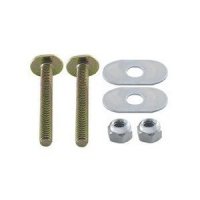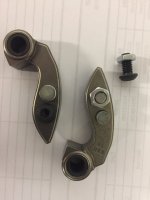View attachment 137153
I have had Ulmer Racing machine my clutch, but machining is not required to run the 8dn belt. Because it is slightly longer you will have to just the belt deflection. This is done but adding an additional washer to the three small bolts on the backside of the driven clutch. They are available in .5mm and 1mm thicknesses from Yamaha. Adding theses washers should not be confused with adding three washers underneath the cam to prevent spring binding. I’ve seen some posts on this forum that suggest some people are confusing the two.
On a sidenote: If you do want to space out the cam, which I recommend trying, using the oval washers from a toilet flange Bolt kit will give you the correct shape to support the entire surface area as opposed to using a standard round washer. (See photo) These washers are usually a usually made of stainless steel. This is for use with a factory Yamaha cam. Many aftermarket cams have already have been properly clearanced.


